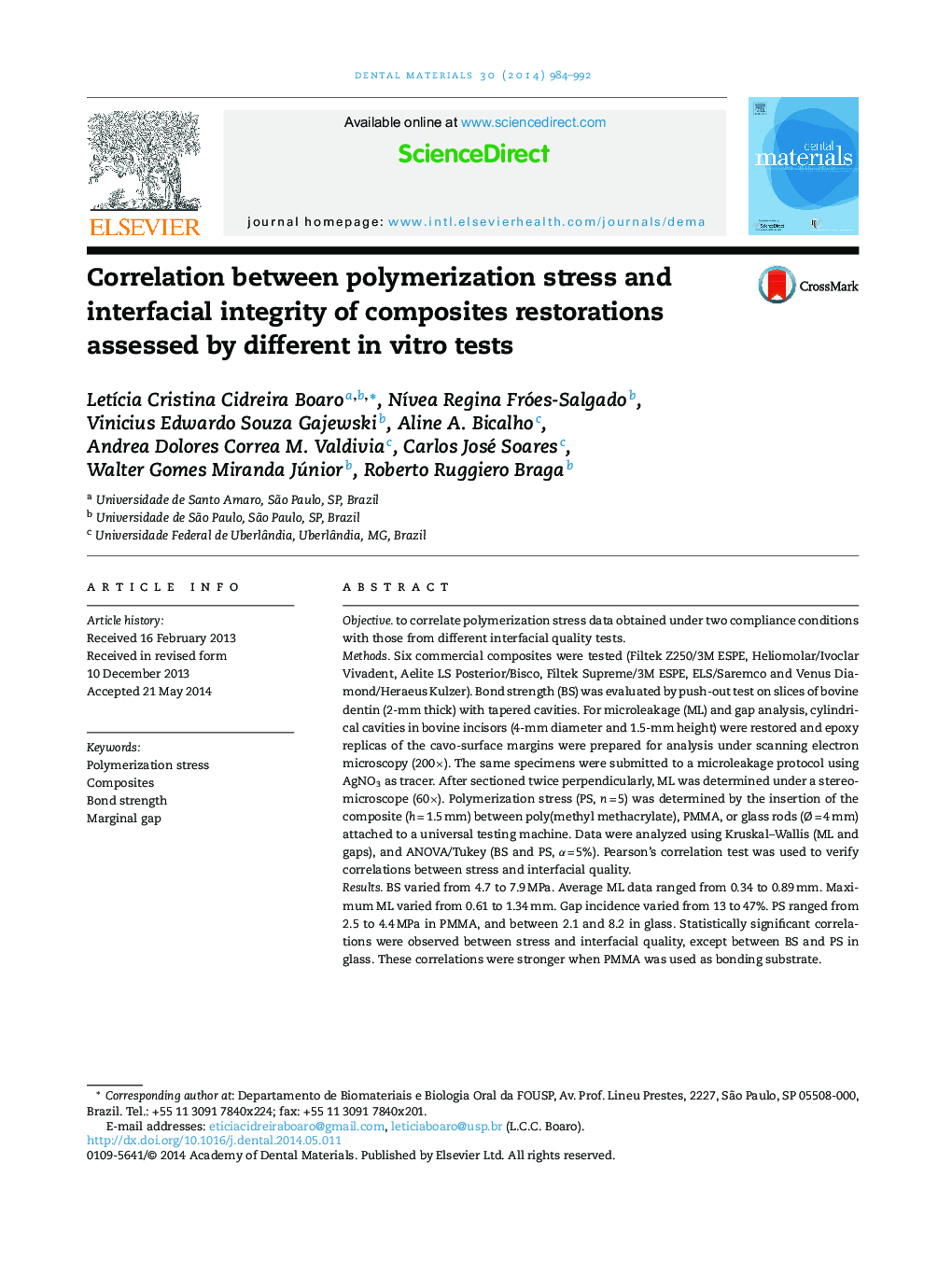| کد مقاله | کد نشریه | سال انتشار | مقاله انگلیسی | نسخه تمام متن |
|---|---|---|---|---|
| 1421097 | 986393 | 2014 | 9 صفحه PDF | دانلود رایگان |
Objectiveto correlate polymerization stress data obtained under two compliance conditions with those from different interfacial quality tests.MethodsSix commercial composites were tested (Filtek Z250/3M ESPE, Heliomolar/Ivoclar Vivadent, Aelite LS Posterior/Bisco, Filtek Supreme/3M ESPE, ELS/Saremco and Venus Diamond/Heraeus Kulzer). Bond strength (BS) was evaluated by push-out test on slices of bovine dentin (2-mm thick) with tapered cavities. For microleakage (ML) and gap analysis, cylindrical cavities in bovine incisors (4-mm diameter and 1.5-mm height) were restored and epoxy replicas of the cavo-surface margins were prepared for analysis under scanning electron microscopy (200×). The same specimens were submitted to a microleakage protocol using AgNO3 as tracer. After sectioned twice perpendicularly, ML was determined under a stereomicroscope (60×). Polymerization stress (PS, n = 5) was determined by the insertion of the composite (h = 1.5 mm) between poly(methyl methacrylate), PMMA, or glass rods (Ø = 4 mm) attached to a universal testing machine. Data were analyzed using Kruskal–Wallis (ML and gaps), and ANOVA/Tukey (BS and PS, α = 5%). Pearson's correlation test was used to verify correlations between stress and interfacial quality.ResultsBS varied from 4.7 to 7.9 MPa. Average ML data ranged from 0.34 to 0.89 mm. Maximum ML varied from 0.61 to 1.34 mm. Gap incidence varied from 13 to 47%. PS ranged from 2.5 to 4.4 MPa in PMMA, and between 2.1 and 8.2 in glass. Statistically significant correlations were observed between stress and interfacial quality, except between BS and PS in glass. These correlations were stronger when PMMA was used as bonding substrate.ConclusionsPS data obtained using a high compliance testing system showed a stronger correlation with “in vitro” interfacial integrity results, compared to data from a low compliance system.
Journal: Dental Materials - Volume 30, Issue 9, September 2014, Pages 984–992
